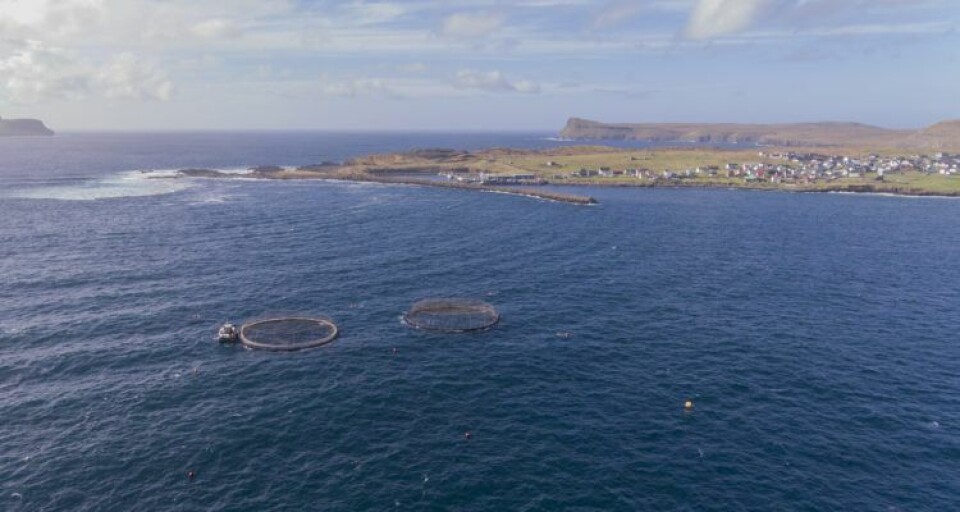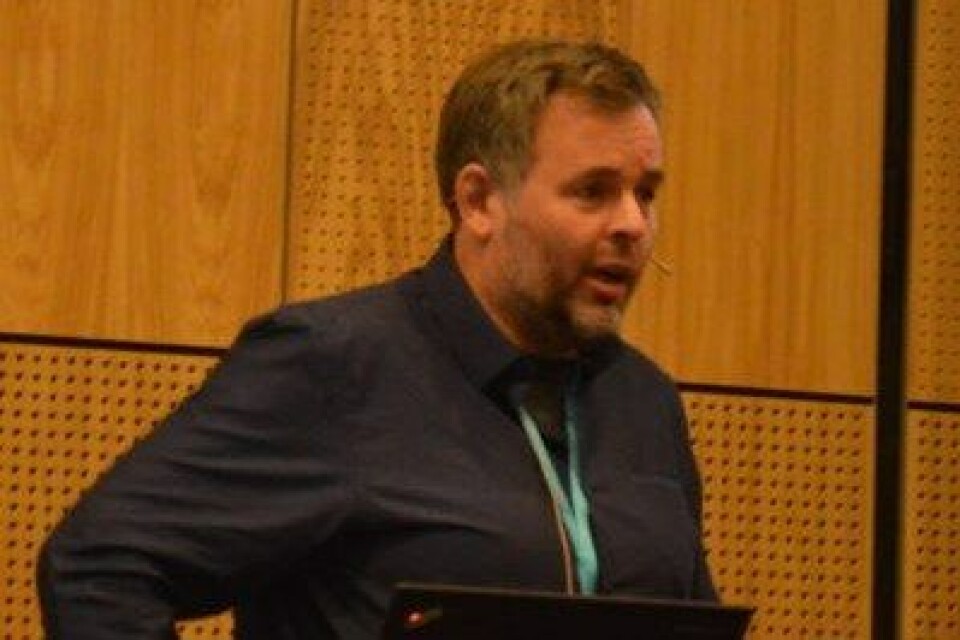
Potential and perils of exposed sites revealed
Salmon farming in exposed sites has great potential - if production is handled appropriately, according to Marine Harvest quality manager Anders Saether.
Speaking at the Tekna Aquaculutre Conference in Trondheim, Saether shared his experiences from Sandsvåg in the Faroe Islands, acquired in 2015, which he said was the company's toughest locality.
"From oceanographic measurement we expected a significant wave height of seven metres and surface currents equal to one metre per second. The first test cage we had at the locality collapsed even before the cage got fish, since the mooring of the cage was not finished when the first winter storm set in," he said.
Slaughtered out due to storm
In spring 2016, Marine Harvest tried again, and put out 120,000 smolts at 370 grams.

Saether says that the project went as planned, before they again met a winter storm in December 2016. This lasted between two and three weeks.
"The storm resulted in all the fish in the cage having to undergo emergency slaughter afterwards, in the interests of animal welfare. The fish then had an average weight near 4.2 kg."
During the storm the deformation of the net was so great that the cage area was substantially reduced, and the salmon were badly injured.
Stronger currents than expected
"Originally, the structure's bottom ring was at a depth of 20 metres," said Saether. "During the height of the storm the bottom ring was measured to have a depth of eight metres."
He said that one possible explanation for why the cage experienced such large deformations, was that the site experienced much stronger underwater currents than expected.
"At five metres the current was measured at 1.24 m / s," said Saether, who also explained that water was reflected back from the shore, so they experienced currents upwind below the surface. Such experiences must be taken into account when producing fish at the site.
"The flow back from the land may also have stirred up the sand, which stressed the fish further. We must understand what exposed aquaculture is, before we can do it," said Saether.
Good growth
Although the project has now been completed and resulted in high mortality, Saether added that there were positive things to take from it. Among other things, the fish had very good growth before the storm.
"The feed factor at the site was at 1.03, compared with an average of 1.12 in the Faroe Islands. Growth rate index (RGI) was 130 at the site, and 111 on average for the Faroe Islands," he said.
"There is much potential for salmon to be exposed, but it must be handled properly."
He added that there are also several challenges related to the exposed sites.
"This is not a place to conduct training of new staff. They must have experience," he pointed out.
He added that common operations on farms, such as delousing, become more difficult.
Marine Harvest has relocated further into the bay but the site is still exposed. New fish will be put out in spring 2018.
"The ring size of the plant is now increased from 120 metres to 160 metres. The plan is to achieve slaughter before the winter storms. This means that we must put out large smolt," said Saether.




















































